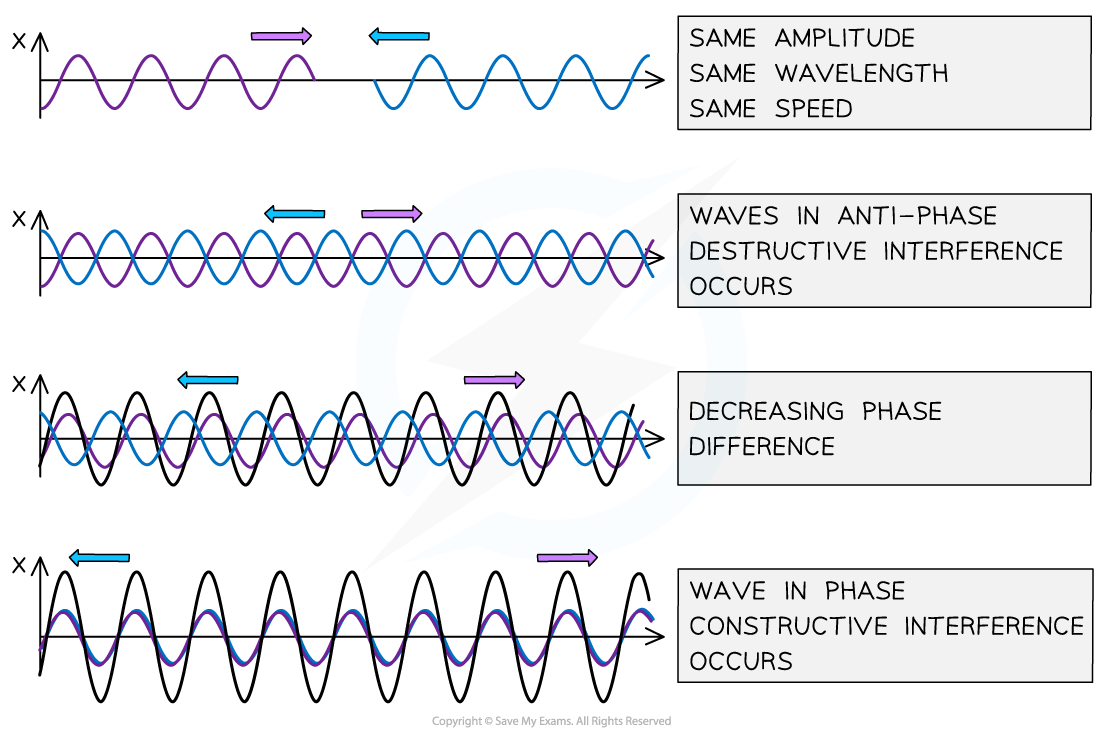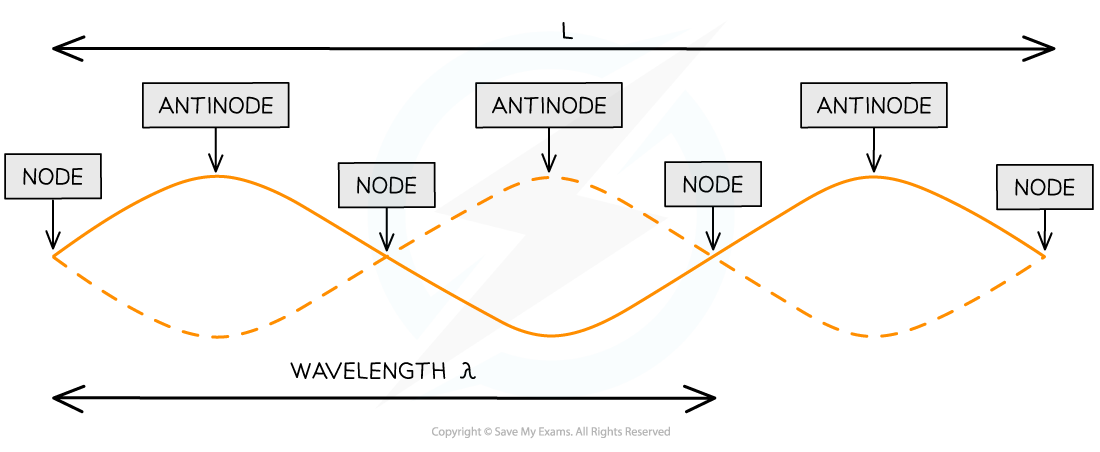Chapters

Introduction
Welcome to the fascinating world of standing waves! This article will unravel the secrets behind these unique wave patterns. We will delve into the concept of superposition, where waves with the same frequency and amplitude travel in opposite directions, giving rise to these intriguing patterns. Along the way, we will discuss the significance of nodes and antinodes, the stationary points and the peaks of these waves. Moreover, we will explore how standing waves intertwine with musical instruments, contributing to the enchanting melodies we enjoy. Join us as we uncover the captivating world of standing waves and their association with resonance in musical instruments.
What are Standing Waves?
Standing waves are unique patterns that form when waves move in opposite directions. This happens when a wave meets its reflection, and they combine. When this combination occurs, the wave pattern appears to stay in one place instead of moving. It creates a unique pattern where the wave's high points (crests) and low points (troughs) don't move.
How Are Standing Waves Formed?
Let's discuss how standing waves are formed.
They happen because of something called the principle of superposition. Here's how it works:
- Imagine two waves moving in opposite directions along the same line, like a rope being shaken from both ends. These waves have the same frequency, which means they wiggle at the same speed.
- When they meet, something interesting happens. They combine, and this is called superposition.
- Superposition is not limited to specific types of waves. It applies to all kinds, such as waves that go up and down (transverse) or squash and stretch (longitudinal).
- It also works for waves that move forward (progressive) or that seem to stay in one place (stationary).
- For superposition to work, the two waves need to have the same wavelength: the distance between one wave and the next.
- They should also have similar amplitudes, which is the height or strength of the waves. When the waves superpose, they create a new lock.
- This wave is called the resultant wave, and it can have a different shape and behaviour compared to the individual waves. This is how standing waves are created.

Difference Between Progressive and Standing Waves
It's essential to understand the difference between progressive waves and standing waves. Here are the key distinctions:
Progressive Waves
- Motion: Progressive waves transfer energy by moving from one point to another in a medium or through space.
- Waveform: The wavefronts of progressive waves move forward and spread out as the wave propagates.
- Nodes and Antinodes: Progressive waves do not have stationary points or fixed patterns of nodes and antinodes.
- Reflection: Progressive waves can reflect off boundaries or objects, changing direction.
- Examples: Ocean waves, sound waves travelling through the air, and light waves are examples of progressive waves.
Standing Waves
- Motion: Standing waves do not travel from one point to another but oscillate in a fixed position.
- Waveform: A standing wave pattern appears stationary, with specific points of minimum displacement (nodes) and maximum displacement (antinodes).
- Nodes and Antinodes: Standing waves have fixed nodes and antinodes that do not move along the wave.
- Formation: Standing waves are formed by the interference of two waves of the same frequency and amplitude travelling in opposite directions.
- Examples: Vibrating strings, sound in a closed tube, and specific musical instruments produce standing waves.
In short, progressive waves move through space or a medium and transfer energy from one place to another. They have continuously moving wavefronts and do not exhibit fixed nodes or antinodes. On the other hand, standing waves appear to stay in one place and are formed by the interference of two waves travelling in opposite directions. They have stationary patterns of nodes and antinodes. Understanding these differences is crucial for comprehending various wave phenomena and their applications.
Nodes and Antinodes of Standing Waves
Let's talk about nodes and antinodes in standing waves. They are essential parts of the wave pattern and have some unique characteristics. Here's what you need to know:
- Nodes are particular points in a standing wave without movement or displacement. They have zero amplitude, which means the wave doesn't go up or down at these points. Nodes are spaced apart by a distance equal to half of the wavelength (represented as
 ).
). - Antinodes: Antinodes are points in a standing wave where the wave has the maximum displacement or amplitude. They are the places where the wave goes up and down the most. Unlike nodes, antinodes can move, but only in the vertical direction.
- Fixed Positions: Nodes and antinodes are set in place and do not move along the wave as it oscillates. They stay in the same spots throughout the wave's motion.
Understanding nodes and antinodes helps us understand the unique nature of standing waves. Nodes don't move and have no displacement, while antinodes have maximum displacement. Together, they create the distinctive pattern of a standing wave.

How are nodes and antinodes formed?
- Nodes: Nodes are created when two waves meet, and their amplitudes combine to cancel each other out. This is called destructive interference. When the waves have opposite displacements (one up, one down), they can interfere and create a node. The removal is zero at the node, meaning there is no movement.
- Antinodes: Antinodes are formed when two waves combine in a way that adds their amplitudes together. This is called constructive interference. When the waves have the same displacement (up or down), they can interfere and create an antinode. The removal is at its maximum at the antinode, resulting in a more significant movement.
Phase on a Standing Wave
The phase tells us how two points on the wave relate. Here are the key points:
- In Phase: Two points on a standing wave are "in phase" at the same point in their motion. This means they simultaneously reach their highest point (crest) or lowest point (trough).
- Anti-Phase: Points that have an odd number of nodes (points of no displacement) between them are said to be "in anti-phase." This means they reach opposite extremes of their motion at the same time. For example, when one point is at its highest point, the other is at its lowest point.
- In Phase with Even Nodes: Points with an even number of nodes between them are said to be "in phase." This means they reach the same extreme of their motion simultaneously. For example, when one point is at its highest point, the other is also at its highest point.
- Points Within a Loop: All topics within a single "loop" of a standing wave are in phase. This means they all reach the same extreme of their motion simultaneously.
How are Standing Waves Associated with Musical Instruments and Resonance?
Standing waves and resonance play significant roles in sound production in musical instruments. Here's how:
- Standing waves are formed inside the instrument when you play a musical instrument, such as a guitar or a flute. These standing waves create the specific pitches and tones we hear.
- Musical instruments have certain parts that vibrate, such as strings, air columns, or membranes.
- When these parts are set in motion, they produce waves that travel back and forth within the instrument.
- As these waves bounce off the instrument's boundaries, they interfere with each other and form standing waves.
Resonance
- Resonance is crucial in forming standing waves and determining the sound produced.
- Resonance occurs when an object vibrates at its natural frequency or one of its harmonics.
- In the case of musical instruments, the natural frequencies are determined by the instrument's size, shape, and properties.
- The instrument's body or air column vibrates when you pluck a guitar string or blow it into a flute.
- If the frequency of the vibrating object matches one of the natural frequencies or harmonics of the instrument, resonance occurs. This causes the formation of standing waves within the instrument.
- The standing waves inside the instrument interact with the surrounding air, producing sound waves that travel to our ears.
- The specific harmonics and patterns of standing waves determine the pitch and quality of the sound produced by the instrument.
- By manipulating the length, tension, or shape of the vibrating parts in an instrument, musicians can alter the natural frequencies and create different pitches and tones.
- This is why changing the length of a guitar string or pressing different keys on a piano produces different sounds.
Understanding standing waves and resonance helps us comprehend how musical instruments produce sound. It allows us to appreciate the connection between the physics of waves and the beautiful melodies we hear when playing or listening to music.












You are the best,, coz you have gotten content about the topics
Hello ! Glad to hear that you’ve found the content useful!